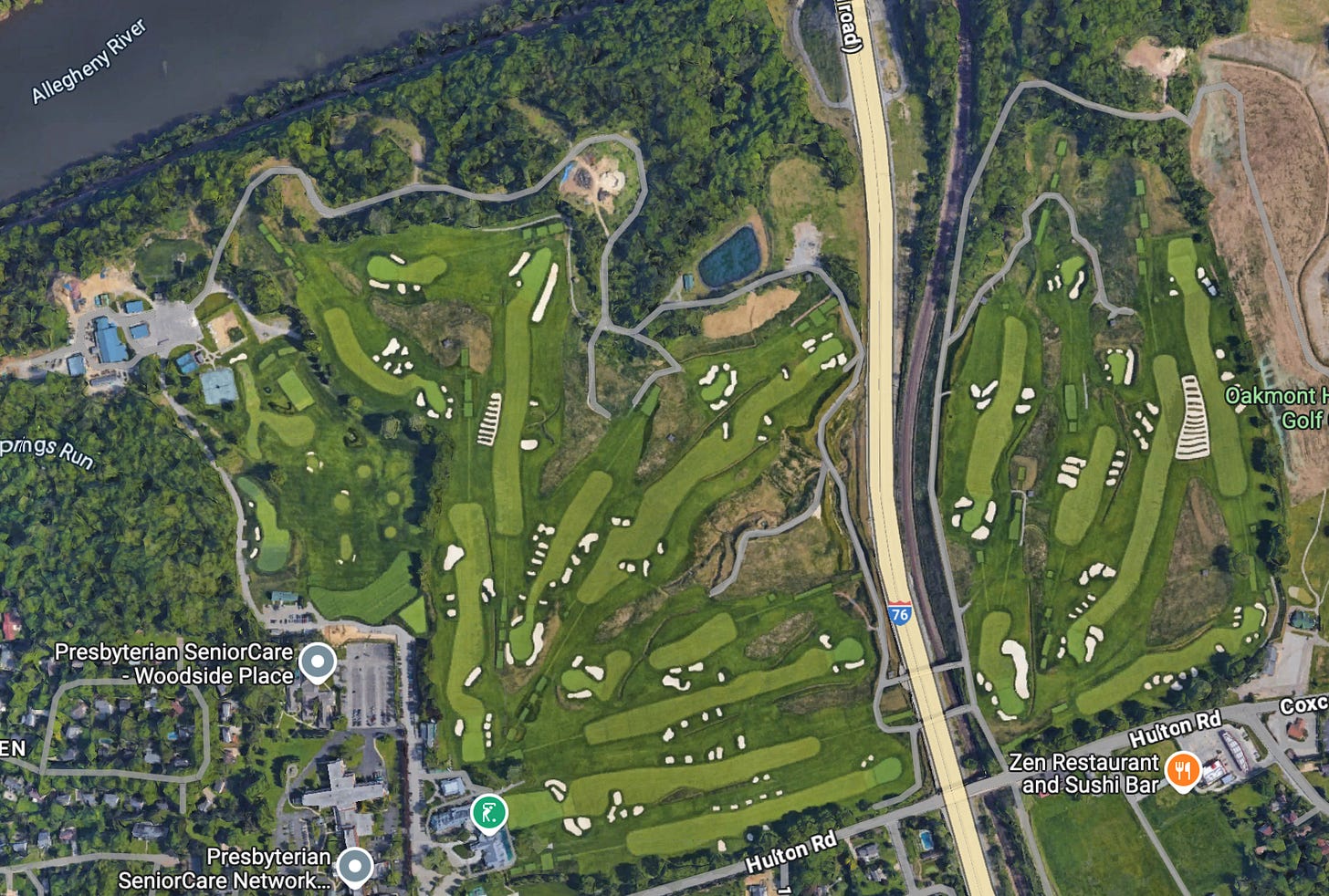The War on Trees
Why do even trees go in and out of fashion?
An interesting question is why fashions in visual taste change over time. For instance, why did architecture become less elaborate and more streamlined in the 1930s, and then suddenly after WWII accelerate this previously refreshing trend to brutalist extremes?
I find stylistic trends in golf course architecture to be intellectually interesting because golf course design seems about as isolated from other art forms as you can get. And yet, tastes in golf architecture tend to go through their own cycles of fashion, some of which reflect broader aesthetic trends, while others are unique to golf.
For example, golf originated on the treeless grass-covered sand dunes of Scotland. Eventually, however, the United States, where trees tend to grow abundantly, became the world center of golf, so golf designers and course superintendents fell in love with trees.
In the second half of the 20th Century, it was fashionable to plant trees on American golf courses. Oakmont, the formidable championship course that will host its tenth U.S. Open this June, opened in 1903 on treeless farmland outside of Pittsburgh. But after the Pennsylvania Turnpike was built through the middle of the golf course, some trees were planted to block the sight, noise, and fumes.
Members liked the trees so much that many more were planted between almost every hole, reflecting the tastes of the concurrent national “Make American Beautiful” drive that encouraged tree planting.
Eventually, the trees grew so tall and thick that they cut the wind and began to cast too much shade on the grass for optimal growth. The original vista from Oakmont’s clubhouse across the entire course was lost.
Across America, golf course superintendents, perhaps the profession least like modern artists, turned against trees.
So, in this century, the chainsaws came out, probably starting at National Golf Links of America in the Hamptons in 1990. At Oakmont, the grounds crew started by going out at night and chopping down trees the members wouldn’t miss. But as the process continued, members started to come on board.
Oakmont now has exactly one tree left within the perimeter of the course (to the left of the third tee on the hole with the famous “church pews” sand trap on the right edge of this aerial photo):
“That’s one nervous tree,” jokes the superintendent.
Did thinning the dense forest of the late 20th Century improve Oakmont?
Sure.
Did they go too far?
At some point in the future, people will come around to the view that: “Of course.”
So, they’ll start by planting a few trees here and there in the most picturesque locations. And it will occur to them that to host huge crowds at the U.S. Open around the summer solstice when the sun is highest in the sky, Oakmont really ought to have some shade trees for attendees feeling like they might get sunstroke.
Everybody will love the first new trees.
Then it will become fashionable to plant copses of trees in the manner of landscape architect Capability Brown on 18th Century English estates. Those will look great too.
Eventually, Oakmont will once again be inundated by thousands of trees.
After awhile, perhaps 100 years from now, the chainsaws (or lasers or whatever they will use then) will be hauled out and they’ll cut down all the trees again. And for awhile, everybody will like the change, until the cycle starts over.
That’s just the way humanity works.




This felt like the first part of a Homeric simile.
I grew up in a suburb with abundant trees. The nicer the area, the older the trees. They would form a canopy over the quiet streets. That was outside Chicago where you'd think we'd treasure what little sun we get. Now in California tree covered streets are rare and people favor trees that provide little shade like palms and Italian Cyprus.
I guess people prefer sun over shade here.
A friend claims that Chinese people hate trees and tend to cut them down when they acquire a house with too many.
Fun fact-- the reason so many places have strict ordinances about cutting down large trees on your own property, is that Mister T cut down all his trees on his property in Lake Forest IL, as vengeance for the city not allowing him to install a white picket fence. I listened to him telling the story on Howard Stern and Howard protested that you can't just cut down all your trees. There are laws against that. :)
BTW, didn't we just do Oakmont?
I didn't watch much sports while raising the kids. But the youngest headed off to college in the early teens and I think I've watched most of the (American) major championships since then. And definitely seen 'em at Oakmont. (Just looked it up 2016--Dustin Johnson.)
Too soon in my book. I don't think the US Open should just be rotating Oakmont, Pinehurst, Winged Foot, Shinnecock, Merion, Pebble Beach, Olympic, etc. etc. If there's only 12 courses or whatever in the UK worthy of hosting the British Open--fine. But this is America. We've got a hundred or more great courses.
I'd say once in a golfer's career--say 20 years--you get a US Open at each of these "known greats". But then the other 10-12 slots you are sampling the other 100+ great championship caliber courses out there.